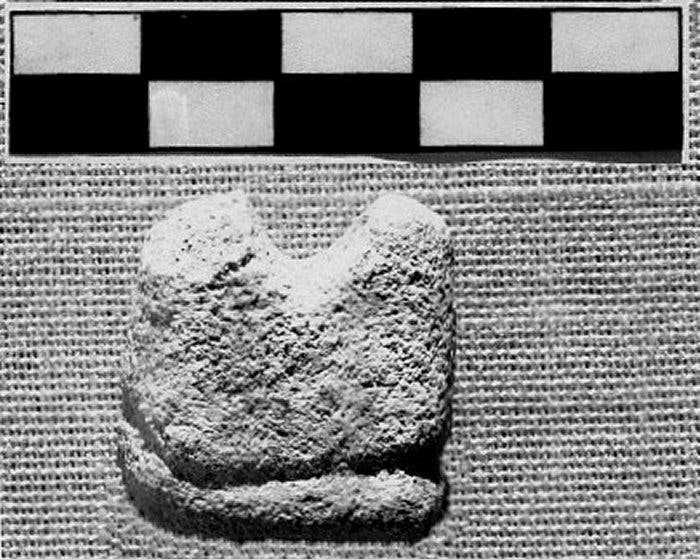One tiny piece of sandstone found in Jordan could be the world’s oldest known chess piece ever found.
Chess is believed to come from India from around 1,500 years ago. Since then, it has spread around the world. That being said, the game itself, its pieces, and its name, likely changed over time.

In a presentation at the American Schools of Oriental Research last week, classical archeologist John Oleson from the University of Victoria has reported that a tiny sandstone object could be the oldest known chess piece — and discussed what it might represent.
In the presentation’s abstract, Oleson notes that Islamic references to chess date as far back as the seventh century AD, and it seemed to have been a very popular pastime.
The object in question was found at a site called Humayma, which Oleson notes was along the busy Via Nova Traiana, an ancient trade route between Asia and the Near and Middle East, in 1991. This carved, two-pronged (but otherwise rectangular) bit of sandstone has been dated using contextual cues to approximately 1,300 years ago. According to Oleson, it looks very much like other early Islamic chess pieces, most likely a rook (castle).
Other objects found in archeological sites from Jordan and the Near East that have been identified as rooks are nearly identical to this sandstone rectangle, whether they were made of wood, stone, or ivory.
In today’s version of the game, rooks symbolize medieval fortifications such as towers or sections of wall, and move horizontally or vertically through any number of unoccupied squares. Oleson says that rooks symbolized two-horse chariots in early Islamic figures, with the carving meant to represent the horses.
Chess was likely carried west by merchants along the Via Nova Traiana. Humayma was a trading outpost of the Abbasid family who, Oleson notes, made an effort to keep up-to-date with current events and trends in Iraq and Syria to the east. So, while there isn’t hard, conclusive evidence that this is a chess piece, circumstantial evidence definitely seems to support that view. If archaeologists can indeed verify that the stone object is a chess piece, it would be the earliest example of a rook-like chess piece, and the oldest chess piece ever found of any type.
The abstract of the presentation, titled “The World’s Earliest Known Chess Piece, from Humayma (Jordan)?” (page 67) is available on the American Schools of Oriental Research’s page here.






